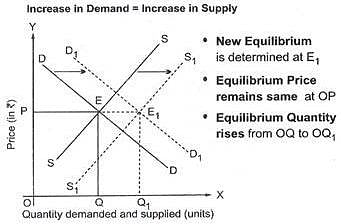Test: Market Equilibrium - 2 - UPSC MCQ
20 Questions MCQ Test Indian Economy for UPSC CSE - Test: Market Equilibrium - 2
| 1 Crore+ students have signed up on EduRev. Have you? Download the App |
The factor that causes a change in quantity demanded is
The factor that causes a change in quantity supplied is
A rise in the price of the complementary good leads to
A fall in the price of the good for a seller leads to
Market for a good is in equilibrium. An increase in demand for the good will
Market for a good is in equilibrium. A decrease in demand for the good will
Market for a good is in equilibrium. An increase in supply for the good will
Market for a good is in equilibrium. A decrease in supply for the good will
Market for a good is in equilibrium. An increase in demand for the good will
Market for a good is in equilibrium. An increase in supply for the good will
Market for a good is in equilibrium. An increase in the price of the good will
Market for a good is in equilibrium. A decrease in price for the good will
|
140 videos|315 docs|136 tests
|
|
140 videos|315 docs|136 tests
|


















